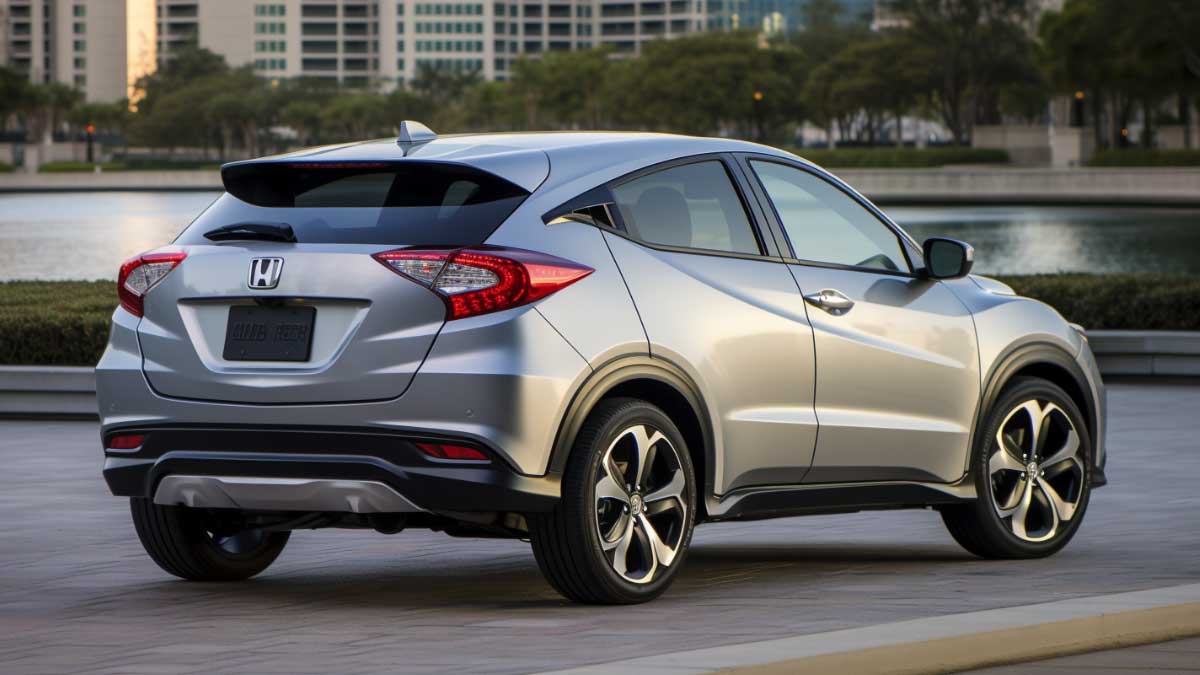One Brake Light Not Working But Bulb Is Good: 4 Reasons and Fixes
Brake lights turn on and off in pairs. If one of the brake lights is not working, a blown bulb is usually the main suspect. When you find that bulb to be in good shape, you might wonder, what on earth happened?
Why is one brake light not working, but the bulb is good? If one of the brake lights doesn’t work even if the bulb is good, the problem may be with that specific socket or its connections. Other issues, such as a blown fuse, grounding problems, etc., can also be responsible.
Let’s find out all the possible reasons behind this problem and solve them.
One Brake Light Not Working But Bulb Is Good: Reasons and Solutions
Two brake lights not working may be understandable. But one brake light making problems is confusing. I will try to clarify the issue. Let’s check the reasons below.
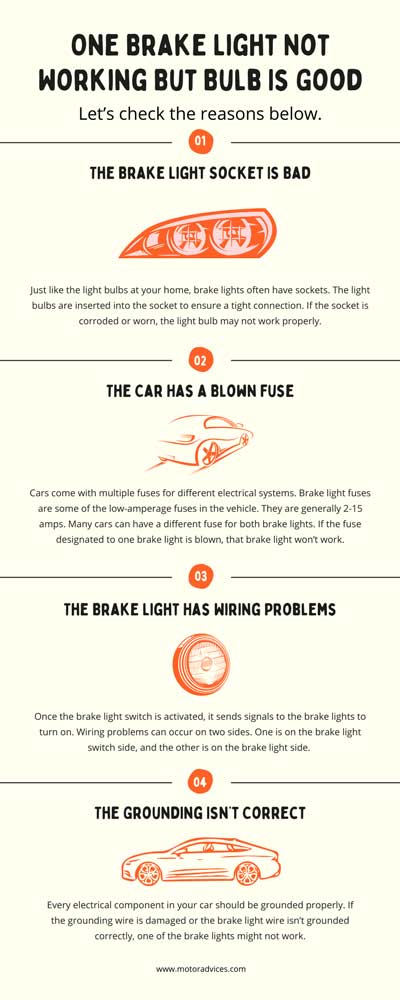
1. The Brake Light Socket Is Bad
Just like the light bulbs at your home, brake lights often have sockets. The light bulbs are inserted into the socket to ensure a tight connection. If the socket is corroded or worn, the light bulb may not work properly.
The wiring of the socket can also be faulty, which will cause the brake light not to work. It is highly unlikely for both sockets to go bad at the same time. So, one of the brake lights will work, and the other won’t. Remember, modern vehicles with LED brake lights might not have this problem.
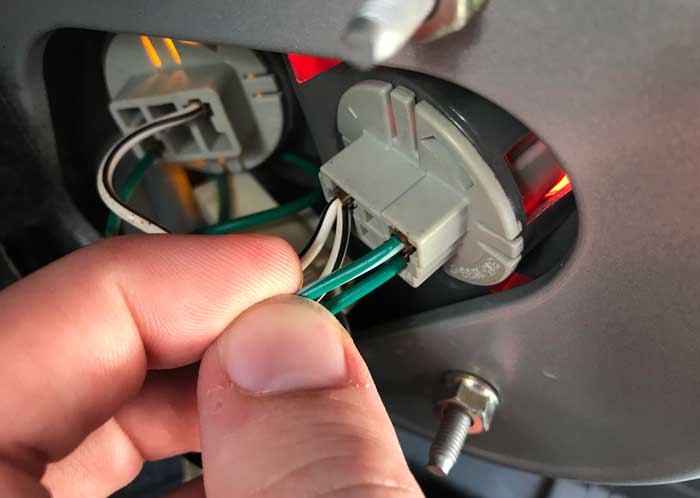
Symptoms
- Tail lights on both sides of the vehicle might work properly, but one brake light will malfunction.
- The faulty brake light may turn on intermittently, especially when the vehicle goes over bumps.
Solutions
- You need to reach the brake light housing. Open the trunk to access the light housing.
- Unscrew the brake light housing from the assembly and take the light socket out. Inspect the socket for signs of corrosion, physical damage, wear, etc. Sometimes, dust or debris can also hamper the connection.
- If the socket seems to be faulty, you can use a test light to confirm. Connect the test light to the socket and touch one end of the wire to the bare metal. If the test bulb doesn’t light up, the socket is faulty.
- Remove the electrical connections from the socket. It is better to remove the battery terminals before doing this.
- Take a new brake light socket and connect the wiring harness. Then, install the socket into the housing and put the housing in place. Then, connect the battery terminals and check if the brake lights work properly.
Check out this video for more help:
2. The Car Has a Blown Fuse
Cars come with multiple fuses for different electrical systems. Brake light fuses are some of the low-amperage fuses in the vehicle. They are generally 2-15 amps. Many cars can have a different fuse for both brake lights. If the fuse designated to one brake light is blown, that brake light won’t work.
But if the car has only one fuse for both brake lights, a blown fuse will cause both lights not to work.
Symptoms
If your car has designated fuses for both brake lights, check for the following symptoms.
- The faulty brake light doesn’t turn on intermittently.
- The other brake light might illuminate with a higher intensity.
- There can be a burning smell from the engine bay.
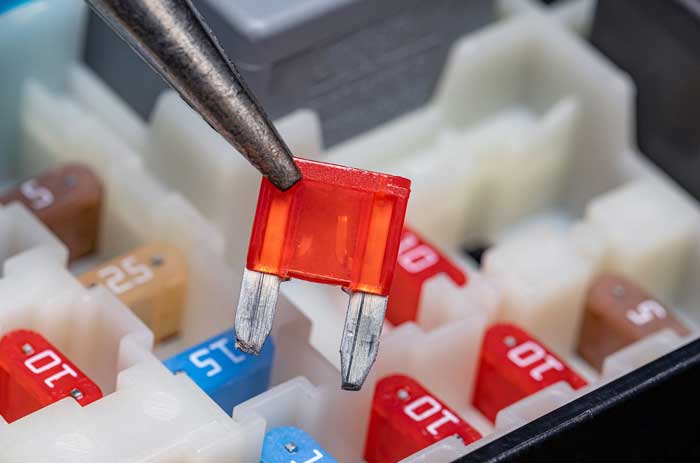
Solutions
- You have to check if the brake light fuse is blown. This can be done in two methods. For older cars with no OBDII ports, you have to open the hood. On newer cars, you can insert an OBDII scanner and read the error code to find if the fuse is blown.
- Find the fuse box at the back of the engine bay. Open the fuse box cover. The fuse box should have a diagram. Use that to locate the desired brake light fuse. Alternatively, you can check the vehicle’s manual to find the right fuse.
- Check if the fuse is blown using a test light. If the light doesn’t work, the fuse is blown. Take the fuse out using needle-nose pliers. Remember, you shouldn’t directly touch any of the electrical components without disconnecting the battery.
- Note the amperage of the old fuse down. Then, take a new fuse of the same amperage or what is suggested in the manual. Insert the new fuse into the designated box.
- Turn the electronics on and check if the brake light is working properly.
3. The Brake Light Has Wiring Problems
Once the brake light switch is activated, it sends signals to the brake lights to turn on. Wiring problems can occur on two sides. One is on the brake light switch side, and the other is on the brake light side.
The chance of a wiring issue on the brake light switch side is really slim. If the switch has a wiring issue, both of the brake lights won’t work. So, the issue is most probably on the brake light side.
Corrosion, moisture, rodents, etc., can damage the electrical wiring to the brake light. So, one brake light might not work while the other is perfectly fine.
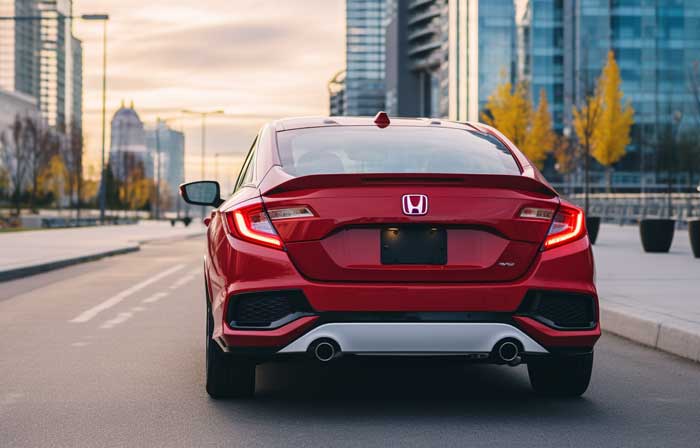
Symptoms
- There will be no fault in the light socket or fuse.
- Intermittent working of brake lights can indicate a loose connection or damaged wiring.
Solutions
- If you have experience in automotive wiring, you can remove the brake light housing and check the connections.
- There should be no sign of corrosion, and the connections should be tight. If there are corrosions, scrub it off using a wire brush. Then, clean the connectors and tighten the wiring harness.
- Without proper experience, you should take the car to a repair shop and have an expert technician find the wiring issue. It will set you back about $50-$100.
4. The Grounding Isn’t Correct
Every electrical component in your car should be grounded properly. If the grounding wire is damaged or the brake light wire isn’t grounded correctly, one of the brake lights might not work.
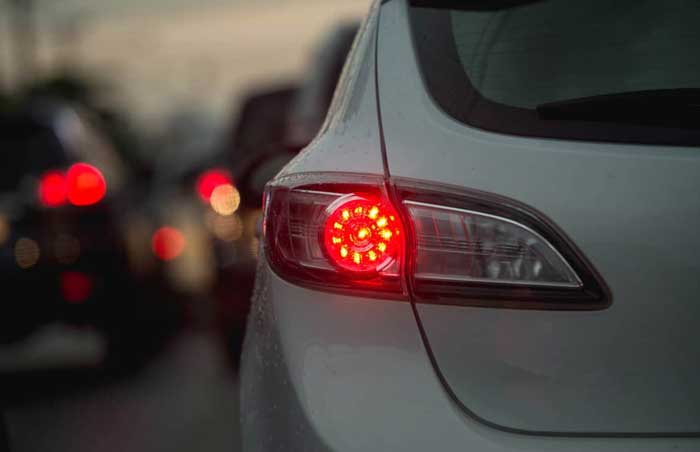
Symptoms
- The tail lights might also not work if the grounding isn’t perfect.
Solutions
- It will require the intervention of an experienced mechanic. Take the vehicle to a repair shop and get the grounding of the brake light wires checked. It should cost less than $100.
Is It Illegal to Drive If One Brake Light Is Not Working?
Of course! According to the Federal Motor Vehicle Safety Standards No. 108, your vehicle must have all the stop lamps or brake lights in working condition. The number of brake lights will depend on the design of the vehicle.
If the vehicle has only one brake light, such as a motorcycle, you can drive with only one brake light. But if you are driving a car or truck which is required to have two stop lamps by definition, both of them should work. Driving with just one brake light will be illegal in all states.
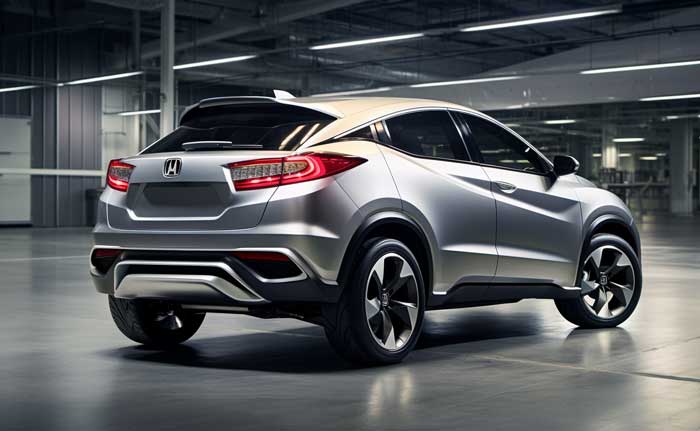
FAQs
These answers to commonly asked questions may turn out to be helpful. Check them out.
The tail light connection is different. It is turned on or off using a knob or selector. So, that will turn on even if the brake light doesn’t.
Both brake lights should come on at the same time. If one delays to turn on, it may indicate a wiring problem or a loose socket.
Not actually. If the battery is the problem, none of the lights in your vehicle will turn on.
Other drivers on the road may not understand that you are braking. So, the risk of a rear-end collision will be higher.
Final Thoughts
Brake lights are crucial for your safety and that of others on the road. If one of the brake lights doesn’t work and the bulb is fine, it indicates more serious problems. So, why is one brake light not working, but the bulb is good? A bad brake light socket, blown fuse, faulty wiring, or grounding problems may be responsible.
You should check the light socket, fuse, and the wiring to find the fault. Take the necessary steps to make the brake light work as soon as possible. Don’t even think of driving with one brake light not working to prevent fines and accidents.

